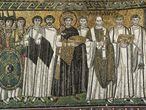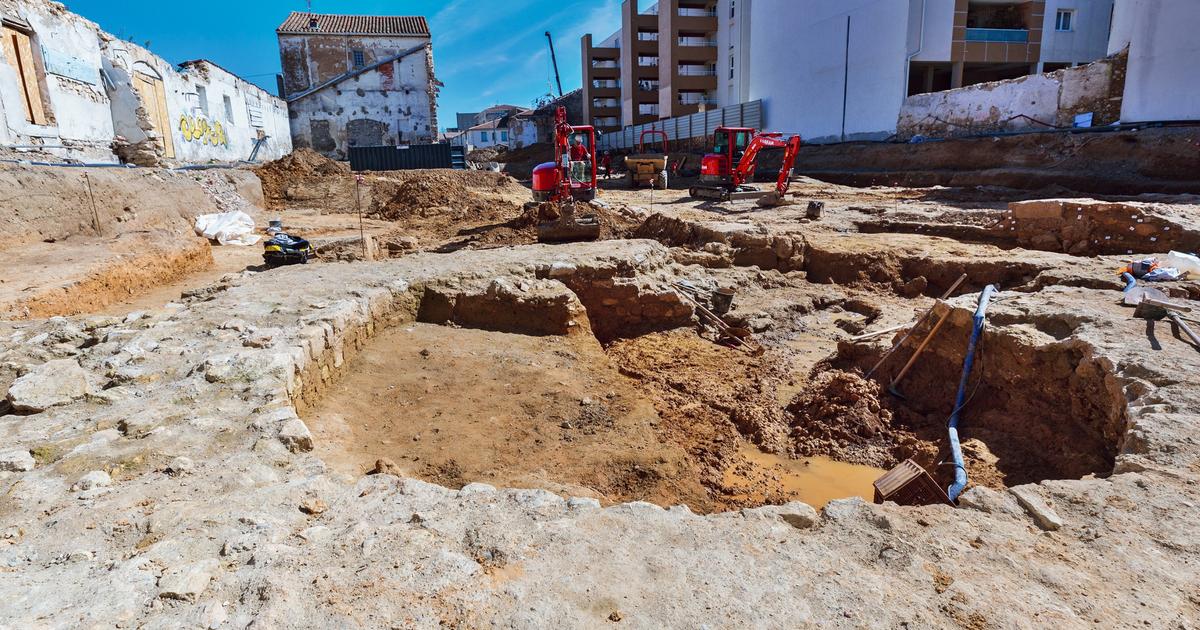Roman lamp with 32 candles, the largest in the empire, found in Elda. Antonio M. Poveda
His name was Lucius Eros and he lived during the mandates of the emperors Augustus and Tiberius (1st century AD) in an Iberian-Roman town (Elo) in what is now the municipality of Elda (Alicante).
He was a potter (
officinator
, in Latin) and signed each of his ceramic skylights, as he engraved his name on the mold with which he made.
Now, archaeologists have restored one of them - it was found in pieces - the largest known of what was the Roman Empire.
It had 32 candles or points of light and reached half a meter in diameter.
It hung from the roofs of large buildings.
In addition to the lamp, which is now exhibited in the Elda Museum, in the Iberian-Roman site of Elo-Monastil, where Lucius had his workshop, four molds for as many types of lamps have already been recovered, along with three ovens.
More information
Identified in Elda the first Byzantine monastery of the Peninsula
The Romans inherited from the Greeks and Phoenicians the technique of making skylights, a circular ceramic object that made it possible to illuminate any inhabited place. They fed on oil and were lit with a small wick or fabric. In the 3rd century BC its use had already spread throughout the Mediterranean, which led the Romans to open
offices
(workshops) to manufacture these lighting instruments in the lands they were conquering.
In 1989, Antonio M. Poveda, professor of Ancient History at the University of Alcalá de Henares and director on leave of the Archaeological Museum of Elda, discovered a Roman pottery from the 1st century in El Monastil, right in the place where Lucius had opened his workshop.
Among the objects found, the remains of ceramic skylights that showed multiple spouts stood out;
that is to say, the peaks with a hole through which the wick that was supposed to allow illumination came out.
Between 2009 and 2010, more fragments of at least two of these large lighting instruments were recovered, which also included several tubes (
infundibula
) through which the oil, the fuel necessary to soak the wicks and allow their ignition, was introduced.
Poveda maintains that "this type of lighting product must have been difficult to manufacture, requiring specialized potters, such as the workers of Lucius Eros."
"Due to their high cost," he adds, "these objects should not have abounded, reserving themselves to light large rooms in the homes of wealthy owners or institutional buildings."
The archaeologist believes that the workshop would mainly receive commissions from nearby large cities, such as Ilici (Elche) or Lucentum (Alicante).
Roman lamp of 32 candles, rebuilt, and exhibited in the Archaeological Museum of Elda.
These large skylights, due to their remarkable number of spouts or candles, are also called
polilychnis
or
polimixus
lamps
,
of which none have been preserved in the Roman world, with the exception of the one found in Elda, which has just been restored. by Eva María Mendiola Tebar and delivered to the archaeological museum of the Alicante city for its exhibition.
This type of large ceramic lamp, from the fourth century (reign of Constantine and the beginning of the early Christian period), began to be manufactured in metal, usually in bronze, although some texts speak that they came to be in gold.
They soon entered and stood out in Christian churches and basilicas, but they were already called
polycandelum,
clear successors to the pieces that came out of Lucius Eros's furnaces.
Discover the best stories of the summer in
V Magazine
.








/cloudfront-eu-central-1.images.arcpublishing.com/prisa/T5Z4IKWRWVEDFFTNEXAHJXDEJM.JPG)